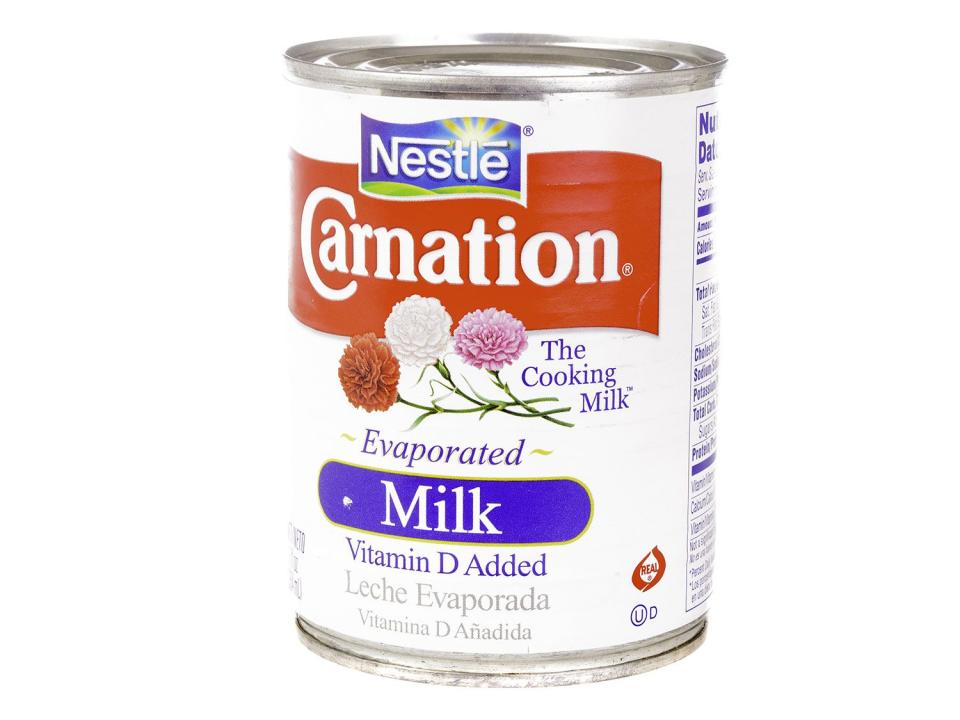Everything You Can Do With a Can of Evaporated Milk
This unsung pantry hero offers the same rich texture of condensed milk without the added sugars, making it ideal for sweet and savory preparations.

Jeffrey B. Banke / Shutterstock
If you're a baking enthusiast, you've probably cracked a can or two of sweetened condensed milk in your time—it's a key player in some of our favorite pies, cakes, and sticky-sweet sauces. But few people are as accustomed to cooking with its milder, milkier, unsweetened cousin: Evaporated milk—canned, shelf-stabilized, low-moisture cow's milk—offers the same thick, rich texture of condensed milk without the added sugars, making it ideal for more savory preparations (and a handful of sweet ones to boot). Here's a look at just how handy it can be.
The Best Mac and Cheese

Serious Eats / J. Kenji López-Alt
If only mac and cheese were as simple as dumping some cheese in a pan, heating it up until it melts, and adding it to cooked pasta. But if you've ever tried precisely that, you know that cheese breaks—you wind up with stringy, greasy clumps that won't even adhere to each other, let alone your macaroni (here's the science, if you're curious). That's why everything from blue-box mac and cheese to the fanciest-pants preparations requires some kind of stabilizer to help bind the cheese together, keeping it smooth and creamy.
Instead of using a typical flour-and-milk béchamel, though, we make our ultra-gooey 15-minute stovetop mac and cheese with a stabilizing mix of cornstarch and evaporated milk. Those starch molecules thicken the sauce, while the concentrated milk proteins from the evaporated milk add that signature dairy flavor, without all the water you'd get from cream or regular milk.
Translation? Smooth, shiny, perfectly emulsified cheese that doesn't clump, taste floury, or break into greasy pools.
And the Best Cheese Sauce in General

Serious Eats / J. Kenji López-Alt
Better yet, the same principles that guarantee a perfectly silky-smooth mac and cheese apply to pretty much any melty-cheese situation. I'm talking killer cheese sauce for cheese fries, fully loaded nachos, and totchos (tater tot nachos, of course).
Using evaporated milk will also make the filling for your next batch of jalapeño poppers extra gooey, and you can even add it to your cheese of choice to make melt-ready slices of any cheese you desire—great for your next cheeseburger or grilled cheese.
Enriching... Most Things

Serious Eats / Lauren Rothman
Evaporated milk was originally engineered to be rehydrated—which is helpful in places where dairy storage is difficult, like campgrounds, desert islands, or my house when I'm too lazy to run to the grocery store for the fresh stuff. But when left in its thickened, low-moisture canned state, it can also stand in for milk or heavy cream as an enriching agent. Evaporated milk gives body to smoothies, thickens up and sweetens coffee, and adds nuance and richness to creamy soups and chowders, not to mention savory sauces and even oatmeal. If you don't have much of a sweet tooth, you can also use it in place of sweetened condensed milk in plenty of desserts.
Dense, Fudgy Ice Cream

Serious Eats / Vicky Wasik
On top of all that, evaporated milk also happens to be the key to our super-chewy New England–style ice cream. For that you can thank its high protein content, which delivers a superior, fresh-churned texture while simultaneously limiting iciness once the ice cream is stored. While milk powder provides that protein in most recipes, we find that it tends to add a chalky sweetness. Evaporated milk, with the help of a few other carefully honed tricks, lends cleaner milky flavor to match the dense, fudgy texture, for a scoop that can compete with the Northeast's very best.
October 2015
Read the original article on Serious Eats.

